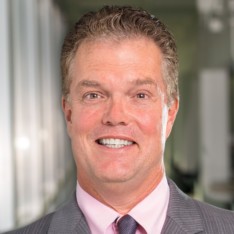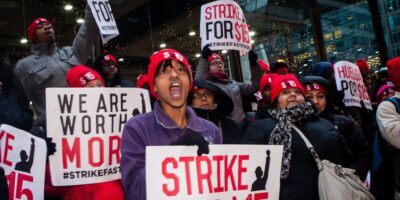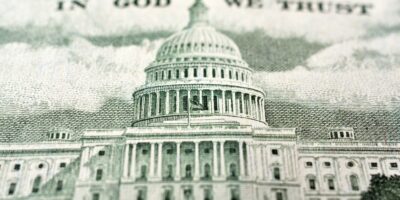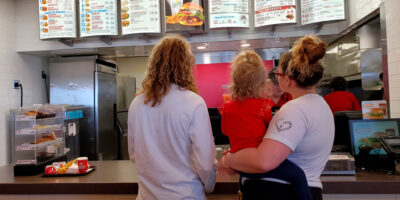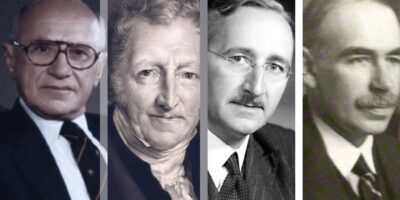Starbucks Too Has Surge Pricing
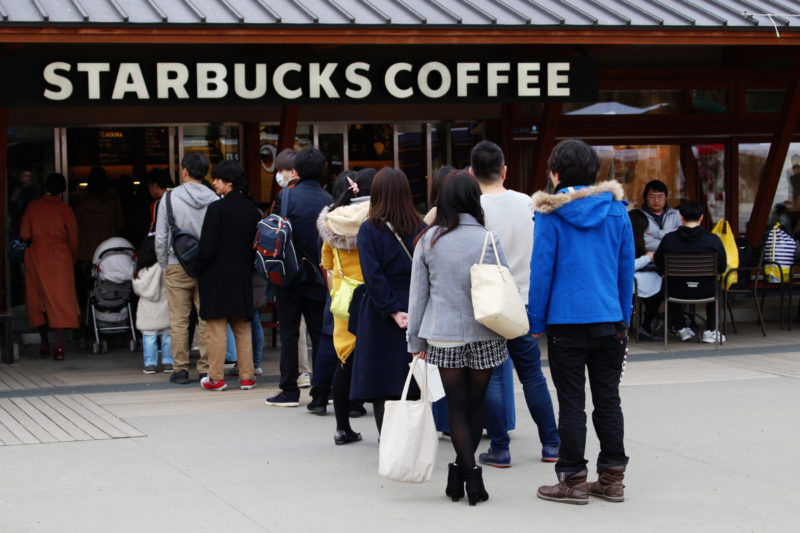
Surge pricing is very old, probably as old as the first person who tried to sell stuff and found he or she could only sell to one person at a time. For some reason, the kind of “surge pricing” involving Uber or other apps that use an algorithm to calculate price is very controversial.
I travel a lot, almost every week. So I spend a lot of time in airports. And I am often struck by the fact that there are some retail places — my own experience would say Starbucks and Chick-fil-A, but I don’t have actual data — where there is often a line. Often a long line.
Economists call a line, or queue, “non-price rationing.” That is, the first step in deciding who gets coffee or a combo burger meal is price: to get served, you have to pay. But the second step is a FIFO (“first in, first out”) system to allocate the attention of the server. In other words, even though you have money and you are ready, even eager, to pay, you have to wait your turn.
I recently had an early flight, and noticed that at 4:40 a.m. (I said it was early) at the Raleigh airport there was an enormous line at the Starbucks. I started counting, but stopped at 50 people waiting. Even if each person can be served in 30 seconds, that’s 25 minutes in line for the last person in line. Some people walked up, looked at the line, said a naughty word or two under their breath, and walked away.
That’s surge pricing, folks. The last person in line had decided the price was not too high, and waited. But the people who walked away decided, for whatever reason — didn’t like waiting, plane was leaving soon, whatever — that the “price” was too high. You could object that the price was actually the same for everyone, and the only difference is the wait time. But that’s the point. The cost of coffee that morning was the sum of the money price for the (overpriced, not very good, or is that just me?) Starbucks coffee plus the annoyance and frustration of waiting in line.
When many people all want coffee at the same time, the “price” (wait time plus money cost) surges. People who would buy coffee if there were no line decide not to buy coffee, or come back to buy it later when the surge price has fallen.
It’s interesting to think of the two extremes, in terms of total cost:
1. The length of the line if the price were zero
2. The price required at different points in time to generate a zero-wait line, but some people still buy coffee
Economists sometimes say that there is infinite demand for a “free” good, but it is perfectly obvious that if Starbucks gave away free coffee an enormous line would form. At some point, the line would be long enough to induce people to go somewhere else, even if that meant a positive price. Many people would pay $4 at Seattle’s Best to avoid a 40-minute line for “free” coffee at Starbucks.
It’s possible to generate estimates of the values of extreme conditions 1 and 2 above. Purely guessing, I’m thinking that a 30-minute wait would be the answer for condition 1, and $10 would be the answer for condition 2.
What’s interesting about all this is that most real-world retail sales use a combination of the two types of pricing, with a fixed money price and a dynamically adjusting “surge price” based on the length of the line. The puzzle is why more companies don’t use dynamic surge money prices.
If you adjust the price correctly, after all, people are indifferent between the extra time or the extra price. If the price goes up by 25 cents, but the wait time is 5 minutes shorter, I know I would be happy. The difference is that time spent standing in line is a cost to the consumer, but it is not a benefit to the seller. It’s just wasted, a deadweight loss to the system.
One answer to my “puzzle” is that we all seem willing to accept surge pricing that takes the form of varying line length. But we hate (HATEHATEHATE!) money-price increases. Uber uses surge pricing, rather than waiting, to ration supply when the quantity demanded exceeds the current number of available rides. And it gets in trouble for it.
Uber’s fares are generated by an algorithm that looks at location, the number of riders hailing cars, and the number of cars in the area (though not the distance between the car and the potential passenger). The algorithm does two things: First, it “rations” access to rides; if there are more riders than rides, some system is necessary for deciding who gets picked up. Second, the algorithm raises fares received by drivers in a way that attracts more drivers. This counterbalances, at least in part, the rationing problem by making more rides available at times of peak demand. Notice that Uber could ration by wait times, the way airports ration taxis by making people stand in line. The “taxi line” is a disappearing (and good riddance!) institution, though, because Uber has converted surge queuing to surge pricing.
Note the elegance of the price “signal”: drivers don’t need to know why there is high demand, or what conditions are leading to a shortage of cars in an area. All they need to know is that if they drive to that location and pick up passengers, they will be paid a premium. And more drivers, noticing the surge, come online, rapidly reducing wait times.
But Uber got in trouble in Sydney, Australia, in 2014. A terrorist had taken 13 people hostage, and thousands of people in the central business district (CBD) all wanted to leave right away. There was not enough transport, and thousands were stranded. The Uber algorithm triggered a surge. Soon, the only cars and vans entering the CBD, heading across the bridges toward danger, were ride-share drivers. When they learned there were high fares to be earned, they left their apartments, got in their cars, and drove to where people needed rides.
Uber was ripped in newspapers and on social media for using price as a means of getting help to people who needed it. One user, Matthew Leung, said, “I have never, ever seen it at four-times [the normal rate] and I’m a 1% top Uber user…. I understand the way the business works — higher the demand, higher the charge — but four-times at £100 minimum is ridiculous. Almost price gouging at its worst.”
But wait. The “surge pricing” happened anyway. It’s just physics. The wait time for an Uber or other transport had jumped to two hours or more. The cost of a ride, the money price plus the wait time, had already skyrocketed. If people wanted to wait, they were welcome to do that. All Uber did was offer an alternative price/wait combination, where higher money payments could buy shorter wait times.
Surge prices happen, whether we like it or not. I think it’s interesting that we all accept a surge in wait time, but get upset when prices surge as an alternative. When will airport Starbucks start to use dynamic pricing? I’d say don’t hold your breath.

